
In 1854, a man named Heinrich Geißler opened a workshop in the city of Bonn, in the Kingdom of Prussia. Geißler was a glassblower by trade. He had learned the craft from his father, the head of a relatively poor family in what is now Thuringia, who earned a living making lamps and thermometers. Heinrich and some of his siblings became craftsmen by default, just because that was the most plausible career path for them. He then spent more than ten years traveling around the German states and Holland as an itinerant glassblower, until he settled in Bonn — according to legend, right next to Beethoven’s birthplace — and began selling scientific glass instruments.
In 1868, fourteen years later, the University of Bonn awarded him an honorary doctorate.
In the intervening period he had invented what became known as the Geissler tube, a technology so important that very little of the modern world would exist without it.
The Geissler tube is a type of gas discharge tube — the first such type, in fact. Electric glow discharge is what happens when you pass an electric current through a gas at low pressure: the gas molecules are dissociated into ions and electrons, which emit fluorescent light (of colors depending on the gas or gas mix) when they recombine. By the 1850s, there had been great progress in both chemistry and electricity — the induction coil, allowing high-voltage pulses, had been invented in 1836, for example — but to experiment with a current going through a low-pressure gas, there were still a few missing pieces. You needed a good glass tube, an electrode at each end (a cathode and an anode), and a means of reliably reducing the pressure inside.
Working with the physicist Julius Plücker, Geißler devised a mercury air vacuum pump, then a tube for holding the rarefied gas after using the pump. The early versions looked like this:
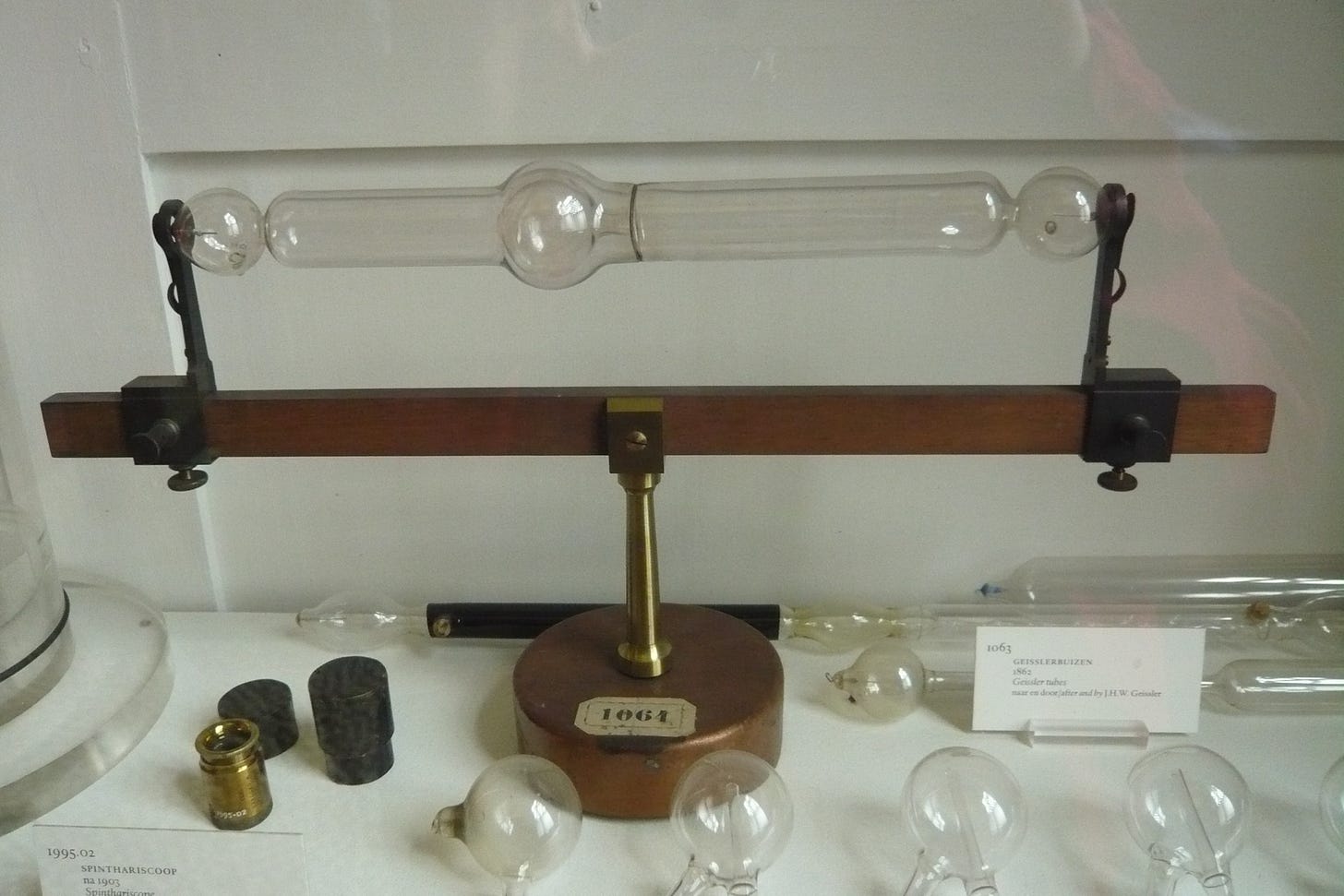
Plücker used the tube — and especially its improved version by William Crookes, the Crookes tube — to investigate glow discharge with his collaborator Johann Wilhelm Hittorf. It would soon turn out that the visible light was what would become known first as a cathode ray, and later as a stream of electrons. This was important, because no one knew what an electron was yet. But we’ll come back to this.
Before the Geissler tube would revolutionize physics, it did what many technologies first do: it revolutionized the sale of entertaining novelty items. In the decades after Geißler’s invention and up until about 1930, companies mass-produced Geissler tubes in all sorts of fanciful shapes and colors:
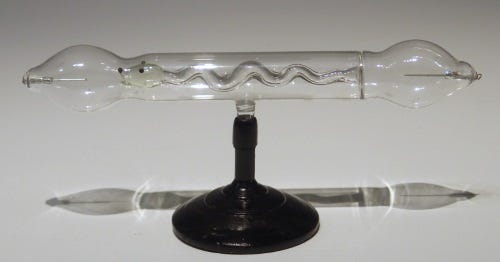

In other words, the Geissler tube was the equivalent of the 1980s’ plasma globe: a cool scientific-looking object that you could buy and display in your house, just for the vibes.
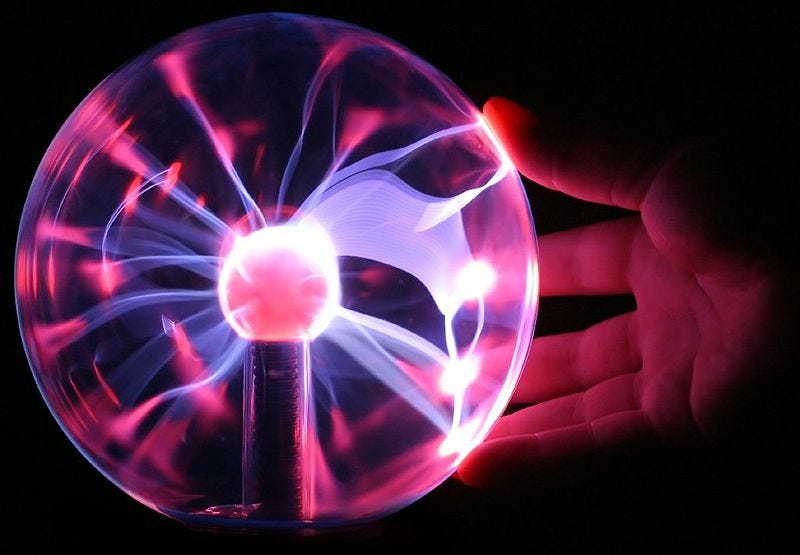
Incidentally, the plasma globe is a distant descendant of the Geissler tube — one among a remarkable progeny. The Geissler tube can be traced as the ancestor of most modern lighting, most modern physics, literally all of electronics, and therefore all radio, television, and computer technology. If we made the full historical tech tree, it would be a critical node, one that isn’t merely an increment in an unbroken line of technological improvements, but a well from which a hundred new innovations sprang forth from. But unlike other critical nodes, such the steam engine, the transistor, or the printing press, what’s interesting is that almost nobody knows what a Geissler tube is.
It’s worth taking a bit of time to survey the children and grandchildren of the Geissler tube and see just how wide the scope is.
Fluorescent lighting
A Geissler tube emits light, so it seems obvious that one of its first applications would be lighting. But it took a while: the first tubes were inefficient. The vacuum wasn’t well controlled, the light was weak and the operating life was short. Meanwhile, this was also the era of the incandescent lightbulb, which, though conceptually similar (a thing glass casing containing a vacuum or inert gas), was not directly related to the Geissler tube.
It took until the turn of the century for practical fluorescent lamps to appear, thanks to improvements in vacuum pumps and experiments with what substances to put inside the tube. The first commercially successful gas-discharge lamp was the Moore tube, which used nitrogen or carbon dioxide as the main gas. Eventually modern fluorescent lamps were invented when inventors settled on using mercury vapor,1 whose gas discharge includes ultraviolet light that makes the phosphor coating inside the lamp glow white.
Today, of course, fluorescent tubes are extremely widespread and, quite frankly, a bit dreary.
Neon lighting
Around the same time as fluorescent lighting came about, another type of gas discharge tube was invented in France: neons.
For neon lights to be created, humanity first had to discover the element neon. That happened in 1898. Neon-based Geissler tubes were made, again for scientific and entertainment purposes, until Georges Claude, a Paris industrialist who had a business in liquefying gases, realized he was making a whole lot of neon as a byproduct. He invented the modern neon tube in 1910, and demonstrated it in December of that year at the Paris Motor Show (Salon de l’automobile).
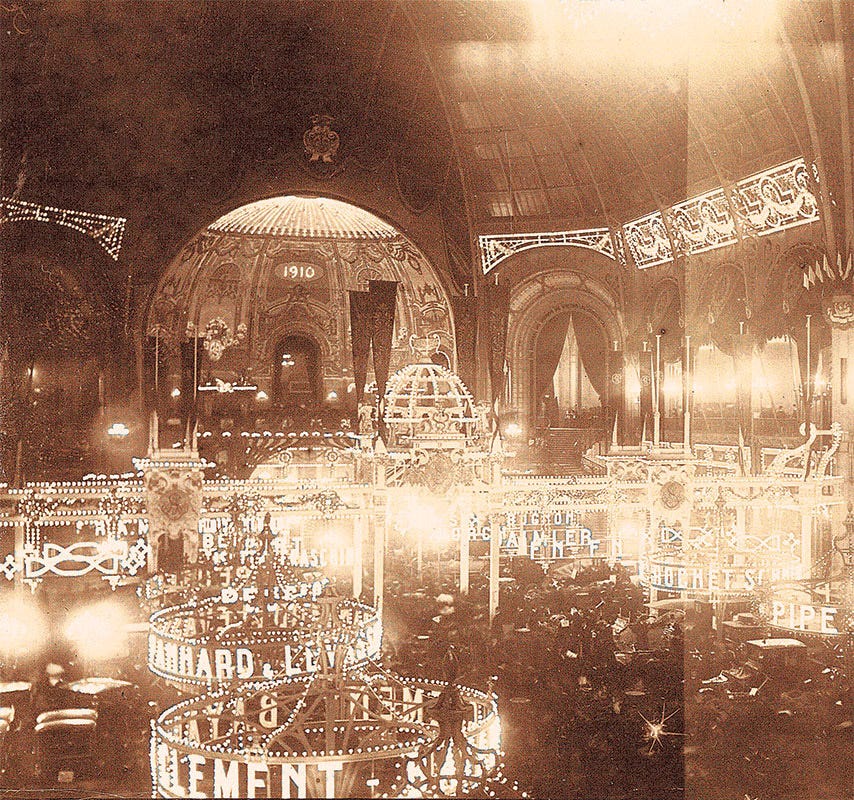
The neon light would become an icon of 20th-century nightlife in many places, including, famously, Hong Kong.
Other types of lighting
Sodium-vapor lamps are what provides the the orange-tinted light that illuminates many an urban night scene. They’re a fairly straightforward gas discharge lamp, though they come in two flavors, low-pressure (invented around 1920) and high-pressure (1959).
Just like you can put neon in a tube, you can put xenon, another noble gas. Xenon lamps have found specialized applications for flash photography and movie projectors thanks to their ability to create intense light that’s close to the spectrum of sunlight.
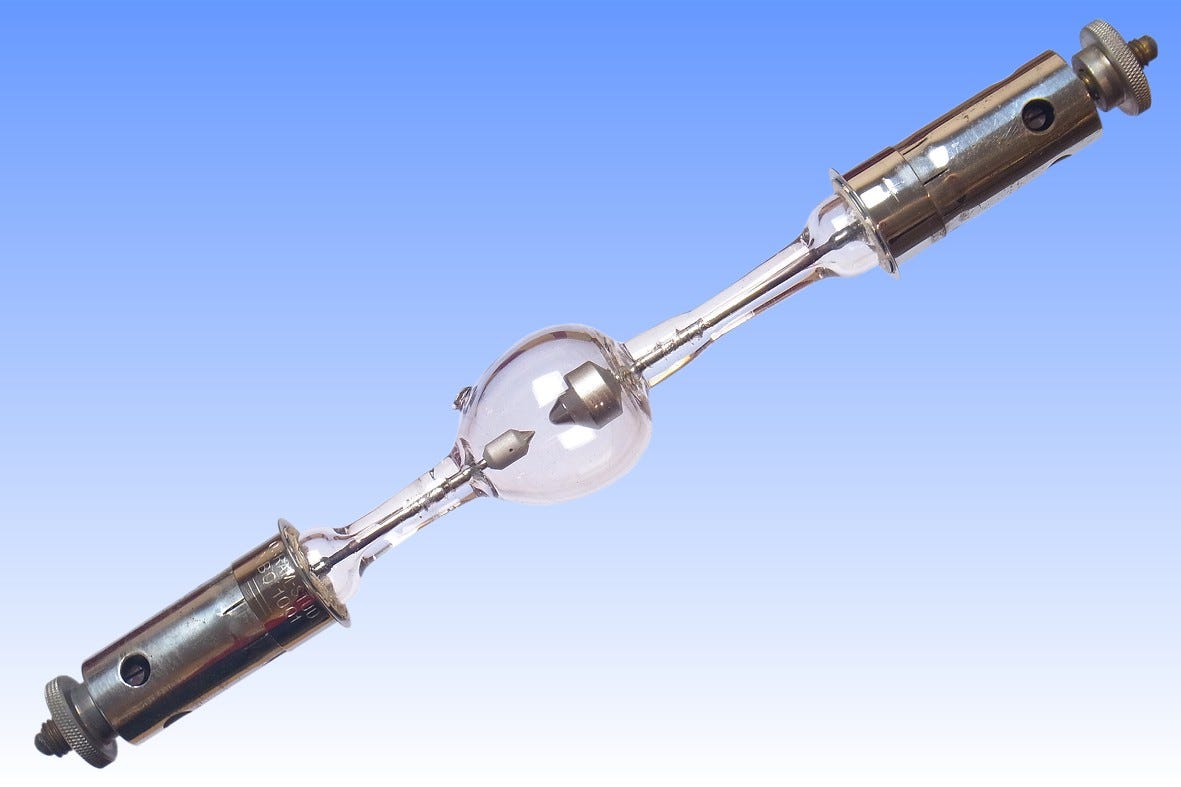
The Crookes tube
Leaving aside lighting, one of the first important applications of the Geissler tube was in experimental physics. In the 1860s-70s, the English scientist William Crookes developed an improved version of the tube, now called the Crookes tube. Here is Mr. Crookes with one of his tubes, as caricatured in Vanity Fair in 1902:
The main improvement the Crookes tube brought is a more complete vacuum, which allowed the electrons to travel more freely inside without hitting gas molecules. When the electrons hit the glass (or, later, fluorescent paint applied to the tube), they excite the atoms and release light.
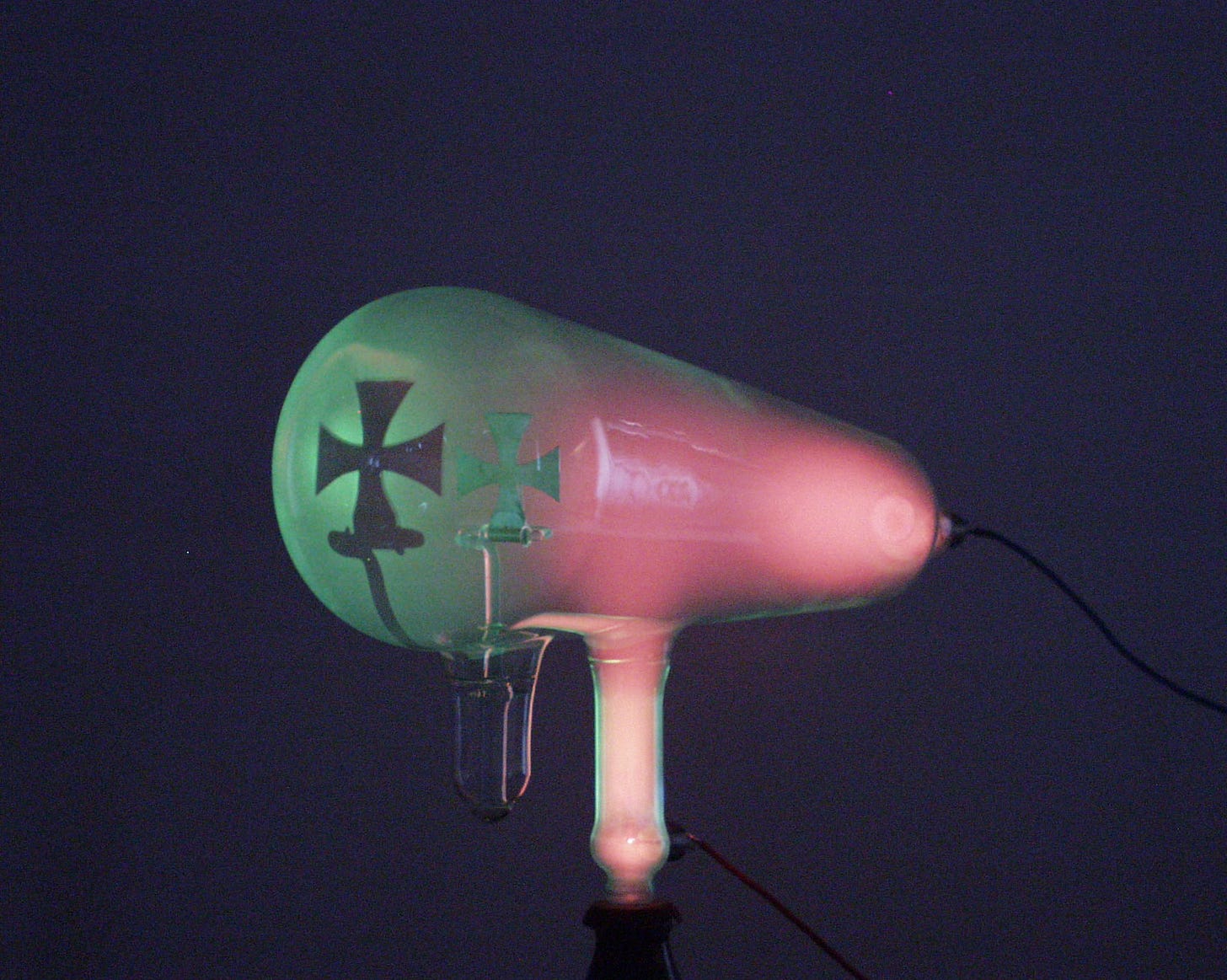
The resulting ray was confirmed experimentally in 1869 and was called a “cathode ray,” because it comes from the cathode (one of the two electrodes). For a few decades that was that: these rays were cathode rays, and no one really knew what they were. Then eventually it was understood that they were in fact …
The electron
The electron is the negative particle that makes up atoms. It was the first subatomic particle to be discovered — by British physicist J. J. Thomson, in 1897, who measured the mass of cathode ray. You can imagine this was a pretty significant event. For the first time something smaller than atoms had been experimentally confirmed.
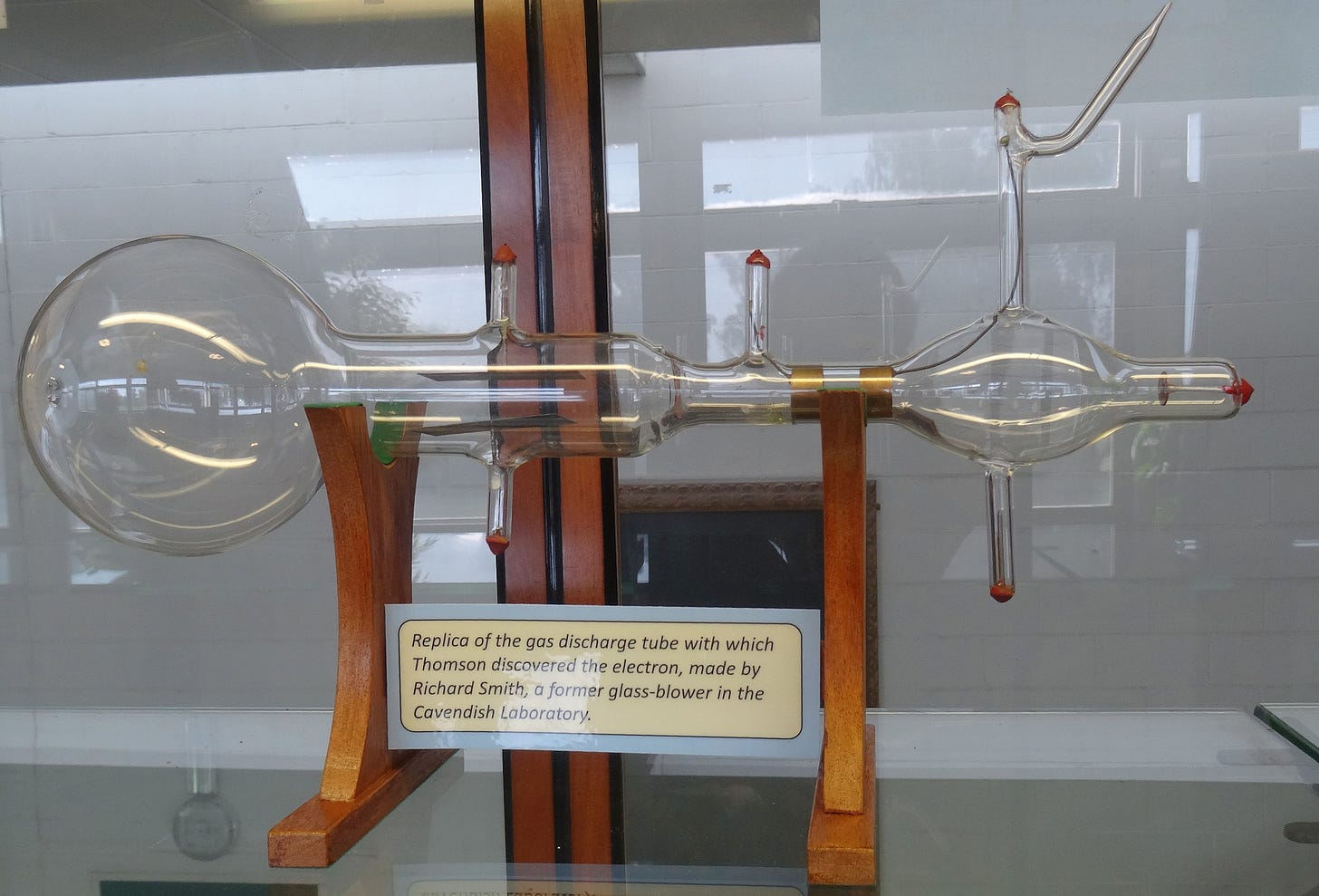
At it was all thanks to a child of the venerable Geissler tube.
X-rays
What other fundamental property of the universe was discovered thanks to the Geissler and Crookes glass tubes? X-rays, so-named because they were “an unknown type of radiation.” X-rays are electromagnetic radiation with a lot of energy, and had been emitted by gas discharge tubes since the beginning alongside less exotic types of electromagnetic radiation such as visible light, but no one had really investigated them until Wilhelm Conrad Röntgen, who formally discovered and named x-rays in 1895. They’re called Röntgen rays in many languages.
The cathode-ray tube
Okay, cool, Geissler tubes allowed us to move physics forward. What did that ever do for us?
Well, if you have a tube with a stream of electrons creating some kind of visible light at the end, you can use that. You can take take on of these tubes, embed it in a machine with a screen with phosphor on it, and activate it based on some information pattern. And voilà, you have a display. A cathode-ray display.
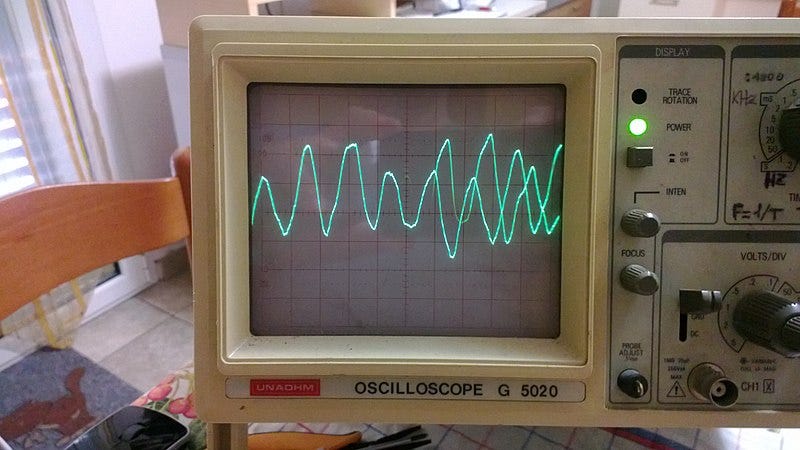
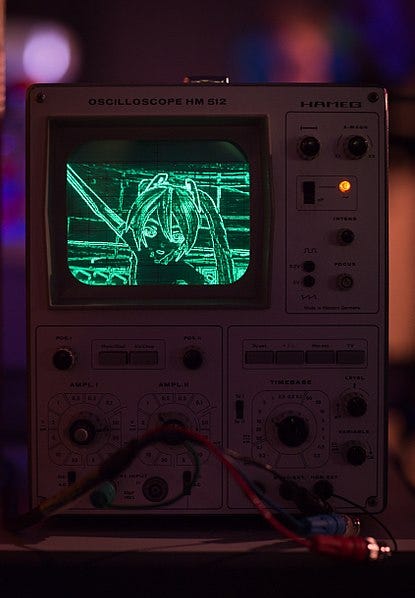
Until liquid-crystal displays became widespread relatively recently, cathode-ray tubes (using something to concentrate the electron beam, called “electron guns”) were used in virtually everything. Here is, for instance, a clearly visible one in the inside of a Macintosh computer from the 1980s:
CRTs were also used for radar displays and soon …
Television
Specifically, electronic television, so called because it uses electrons. (As opposed to mechanical television, using things like spinning disks to record and replay video signals, which came first but quickly became obsolete.) Electronic TV was developed in the 1920s and 30s following a number of innovations in cathode-ray tube design, including coils to deflect the electron beam and make it scan the entire screen to continuously construct and reconstruct a moving image. Later, in color TV, there’d be three beams, one for each of red, blue, and green.
For television to exist, there also needed to be a way to record video. That, too, was done through a cathode-ray tube. The first such tube was, I believe, the image dissector, invented in 1925.
Diodes
Amazingly enough, we arguably haven’t even seen the most important descendent of the Geissler tube yet. That honor may belong to these cute alien-looking devices:
These are the first diodes. They were invented by John Ambrose Fleming in 1904, and are also called Fleming valves or thermionic diodes.
But what exactly is a diode? It’s a component that allows current to pass mostly in one direction, from the cathode to the anode. The Fleming valve was a highly modified Geissler tube containing a vacuum and a heated cathode (made of a carbon filament) as well as a cold anode. Electrons are only released from an electrode when it’s hot, so in a diode they can only go from the cathode to the anode.
This one-way current is useful as a “rectifier,” i.e. to convert an alternating current (AC) into direct current (DC), and was first applied to radio receiver circuits.
Soon enough, in 1907, Lee de Forest invented an improvement: the triode, so-called because it adds a third electrode to the original diode design. This allowed for an extremely important property: the tube could now amplify the received signal.
When the grid has a certain voltage, the current flowing from the filament to the plate is changed, which turns out to be critical for every electronic device. Which is why, for the next 50 years (until transistors replaced them), triodes, generally called “vacuum tubes,” were manufactured by millions to serve in virtually all electronic devices built, like radios and …
Computers
What is a computer? It is a device that can perform calculations. The first computers used gears and levers to do so. But it was quickly realized that vacuum tubes, with their ability to serve as switches and amplifiers, could perform computations too, but faster.
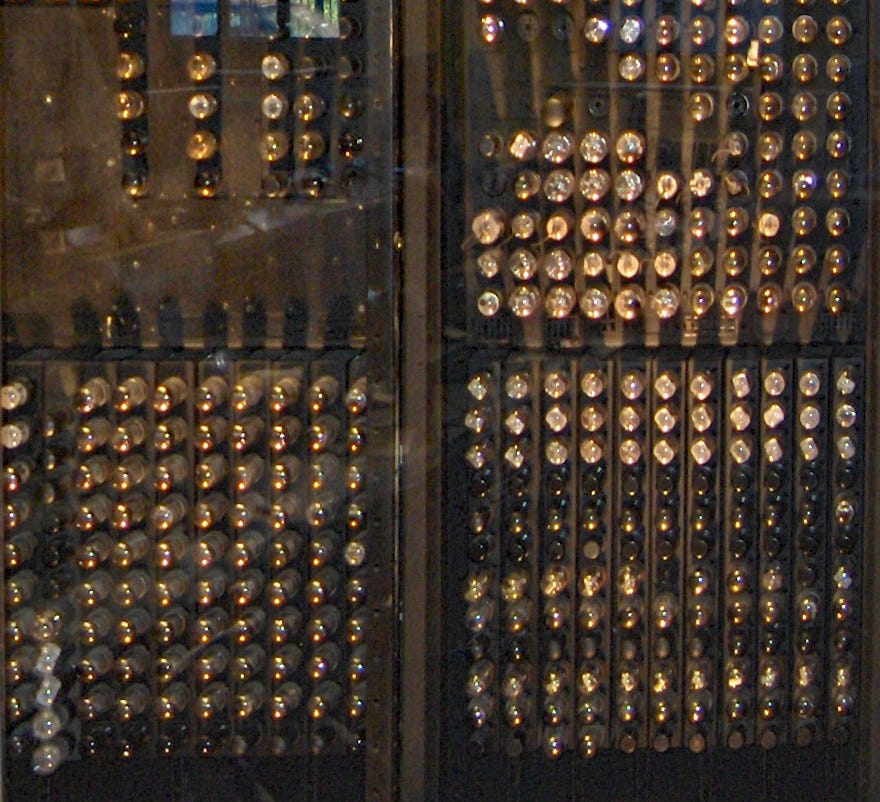
By the time computers became widely used, in the late 1940s, a new invention had come about: the transistor, a device made of semiconductor materials that could perform everything a thermionic diode could, but better and with more possibilities of miniaturization. Very quickly, the “first-generation” digital computers made of vacuum tubes were superseded by transistor-based machines, and likewise for radios and almost all electronic devices, with rare exceptions such as high-end audio amplifiers.
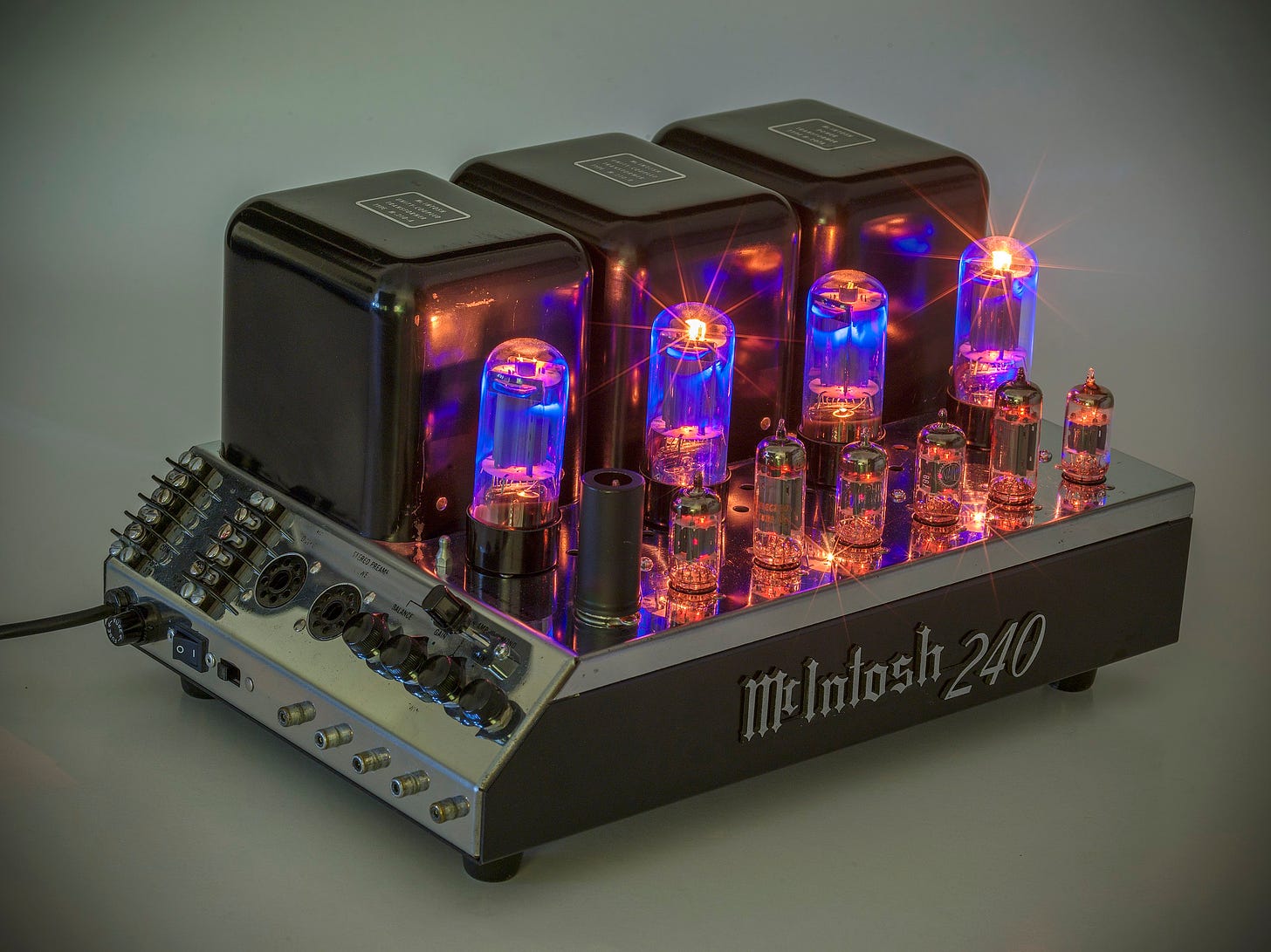
But it’s not a stretch to say that computers had to first go through the vacuum tube phase — in which was we can reasonably say that everything computer-related today, and everything electronic, is a distant descendent of the modest Geissler tube from 170 years ago.
We are all children of many major technologies whose influence has been felt in countless ways, like the steam engine, the transistor and the printing press. But although few of us realize it, we are also children of the Geissler tube, that cute little glass device they used to sell as novelty items, before it turned out that it could manipulate some of the fundamental features of the universe. That seems important to remember.


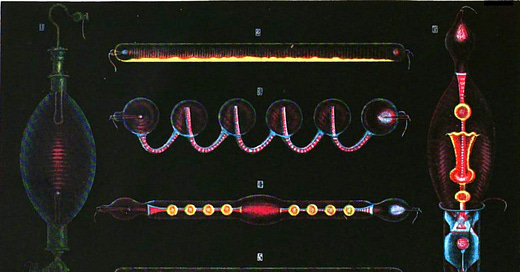


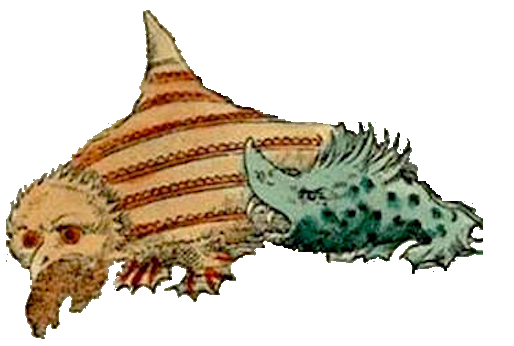

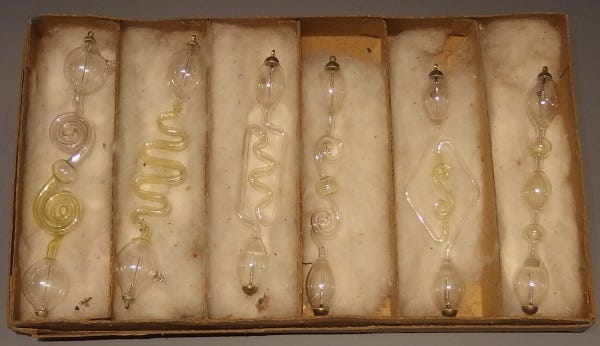

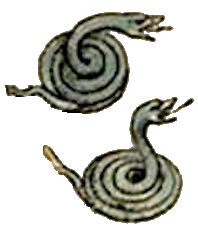
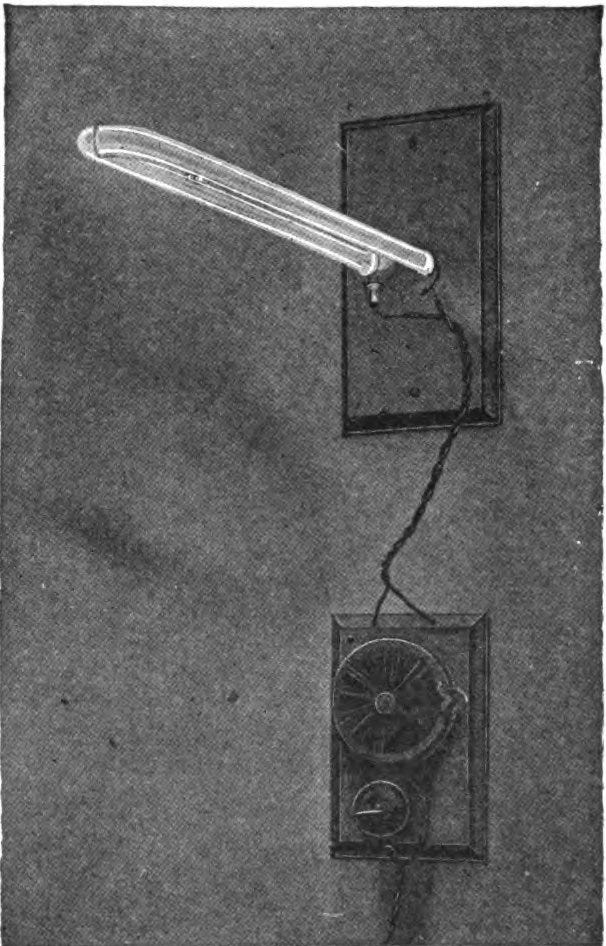

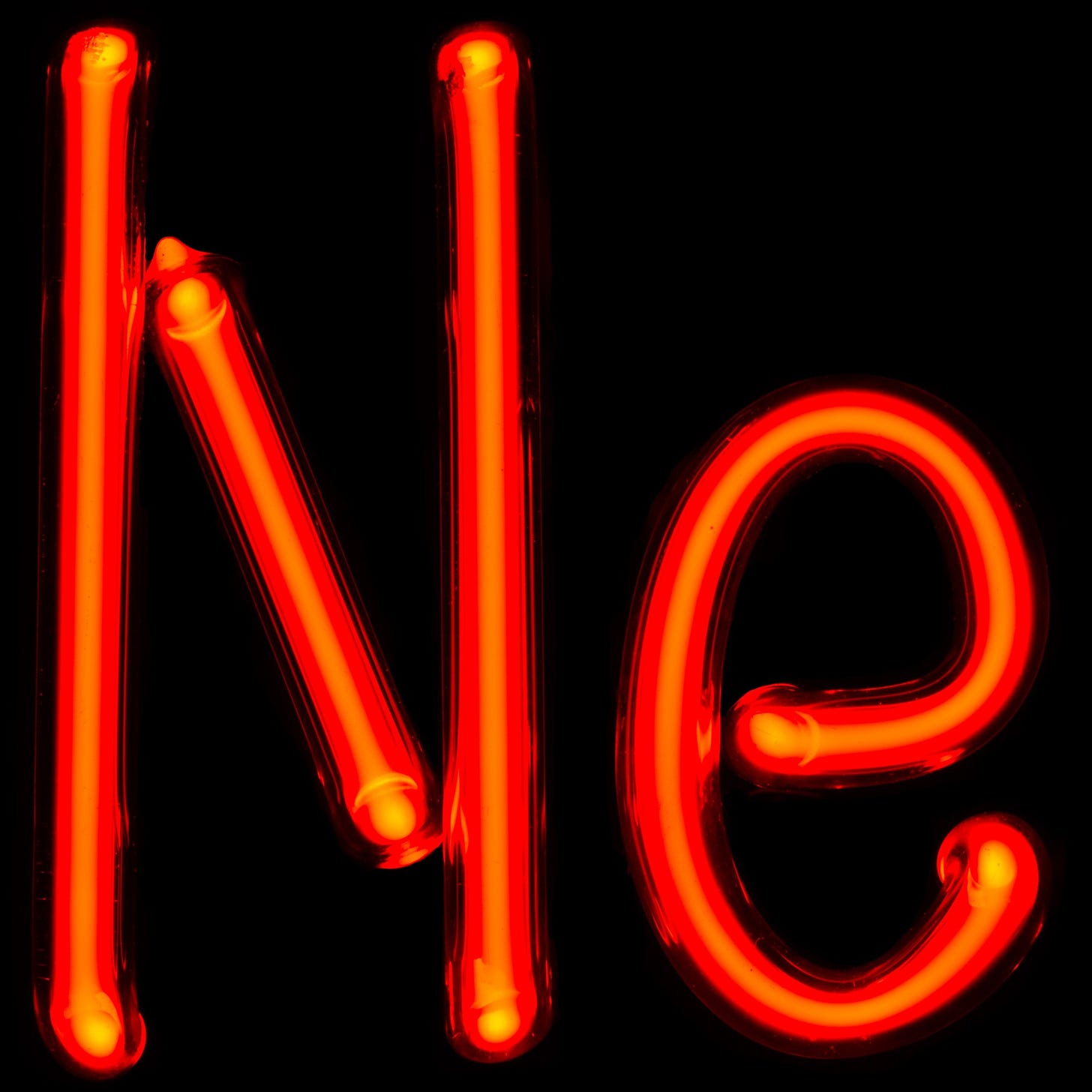

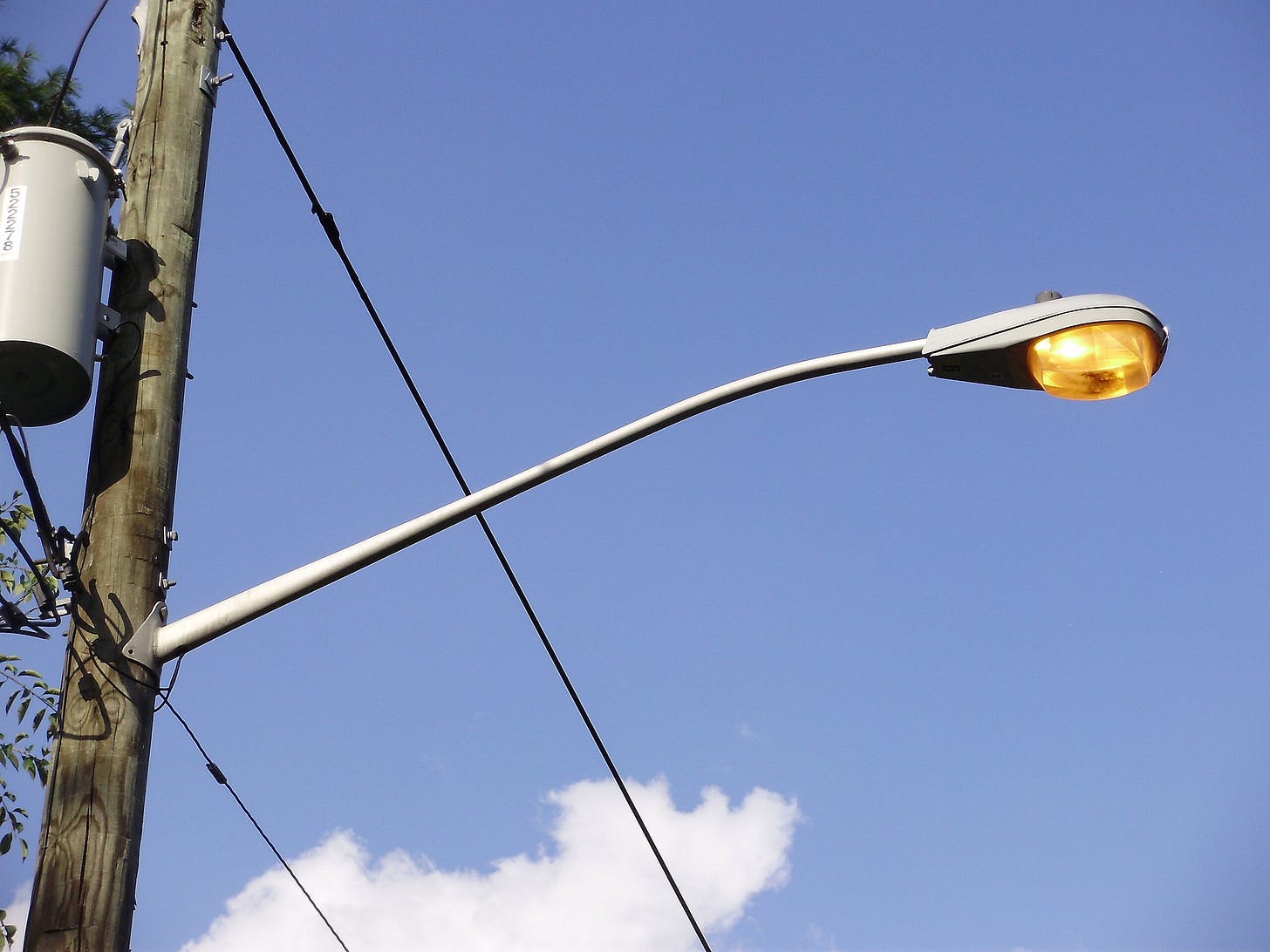
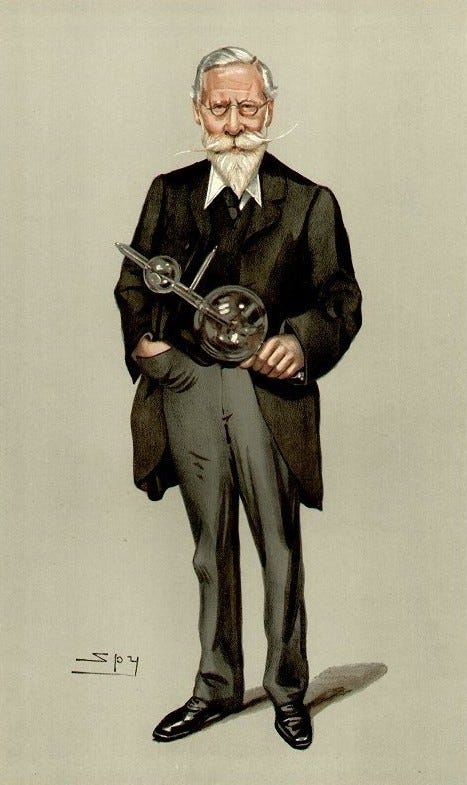
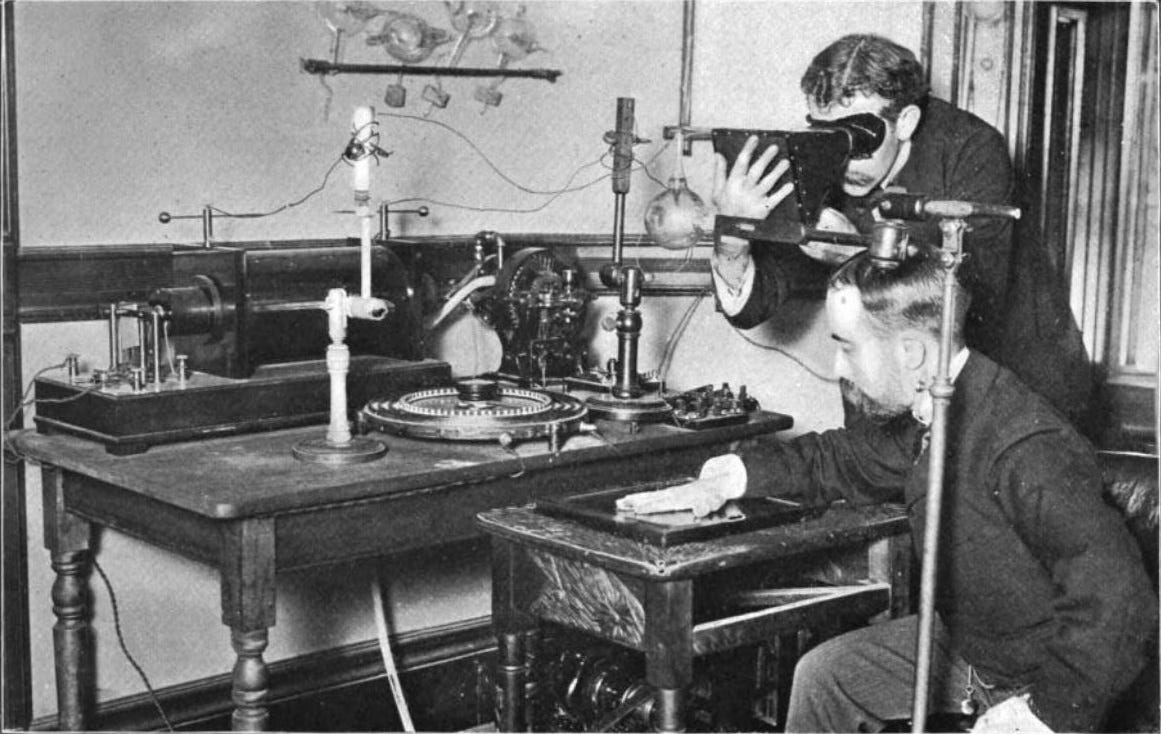
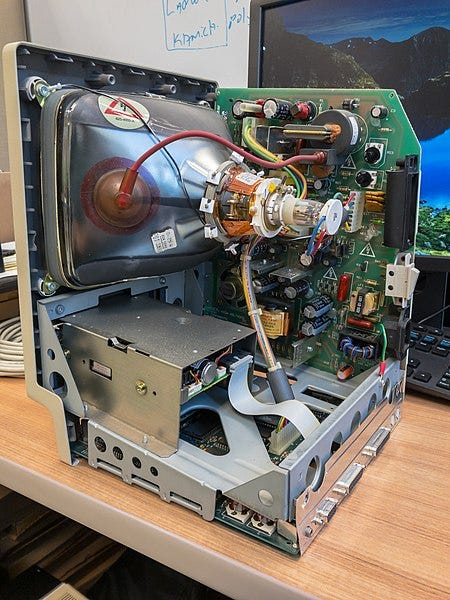
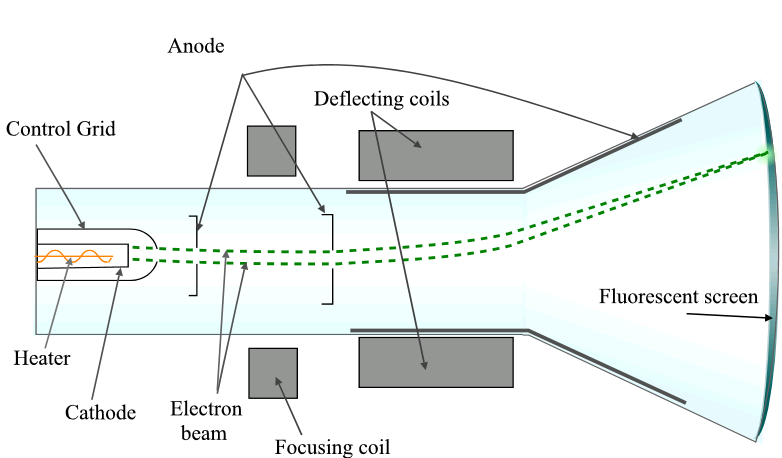
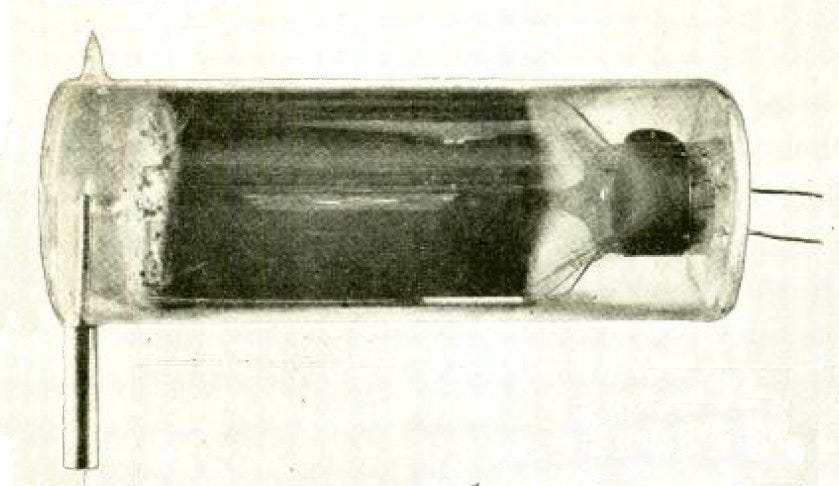
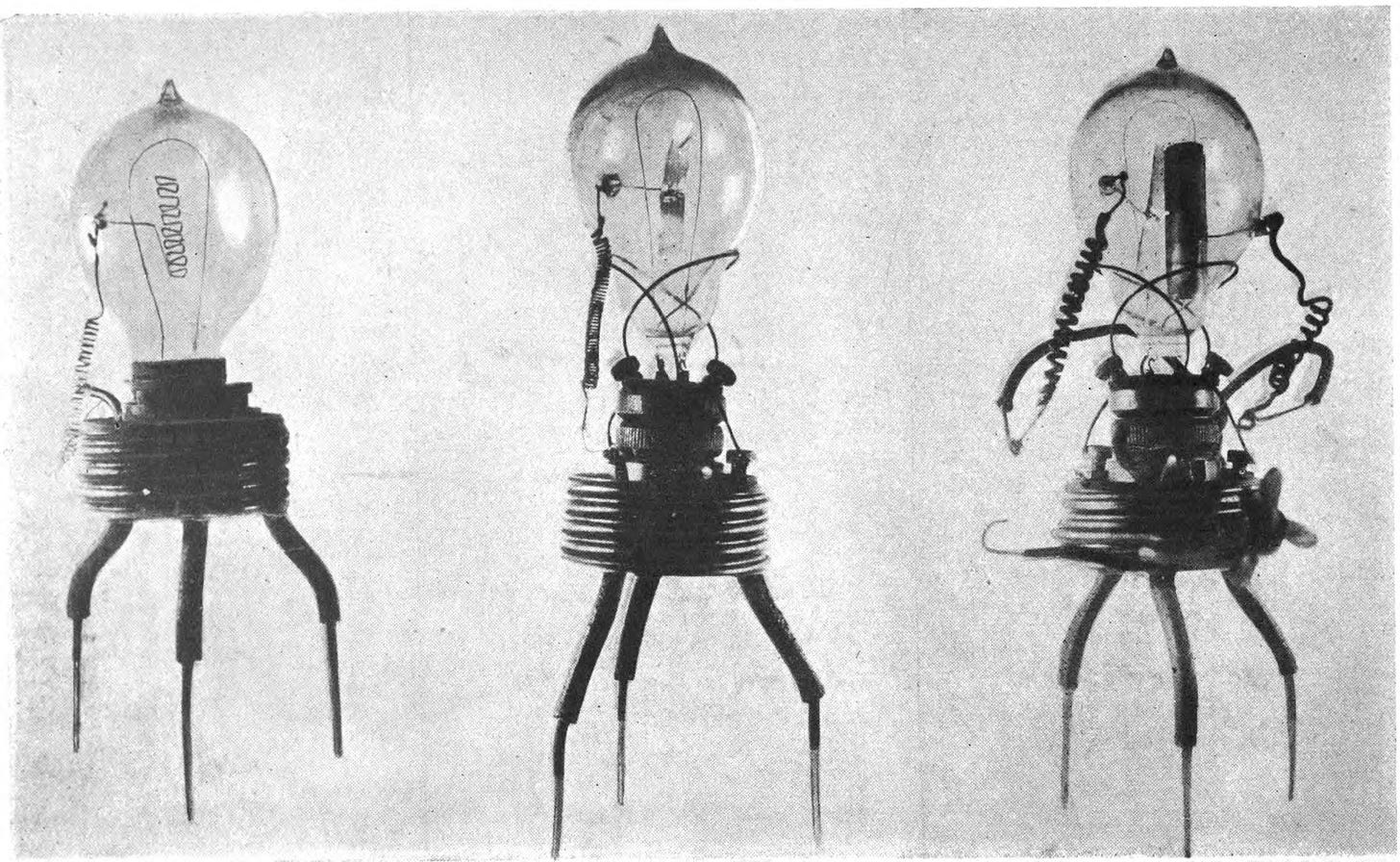
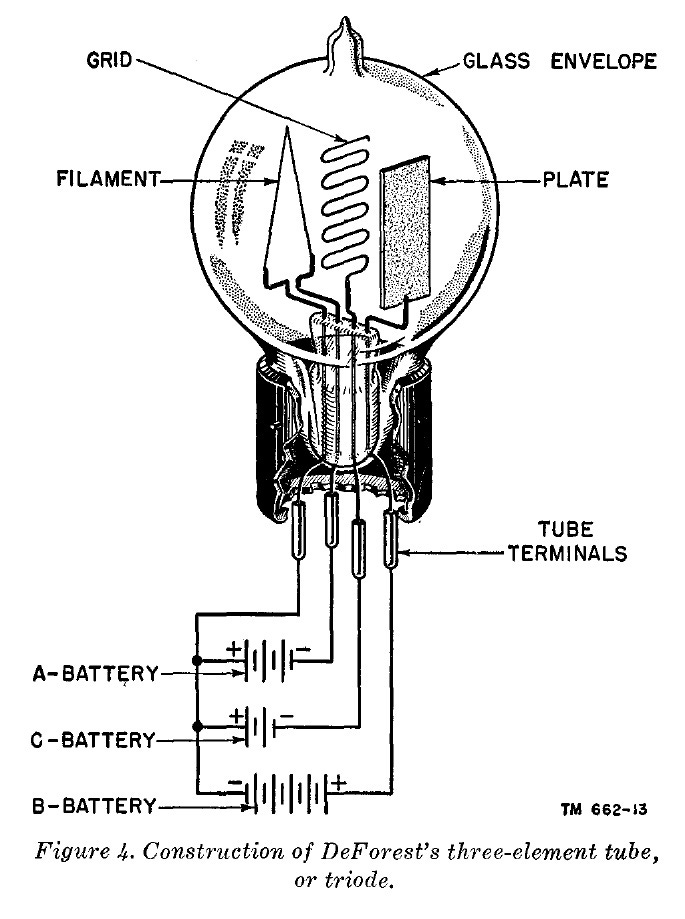
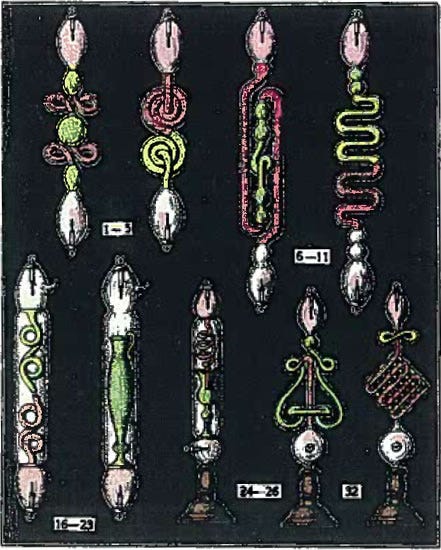

This is absolutely excellent. I can’t believe how much I learned from this piece that I knew nothing about, thank you so much!
Geissler tubes feature prominently in my book The Three Locks, a Sherlock Holmes Adventure published by HarperCollins. As a celebration, my scientist husband gave me a Geissler tube for my birthday that it up red. Fabulous!